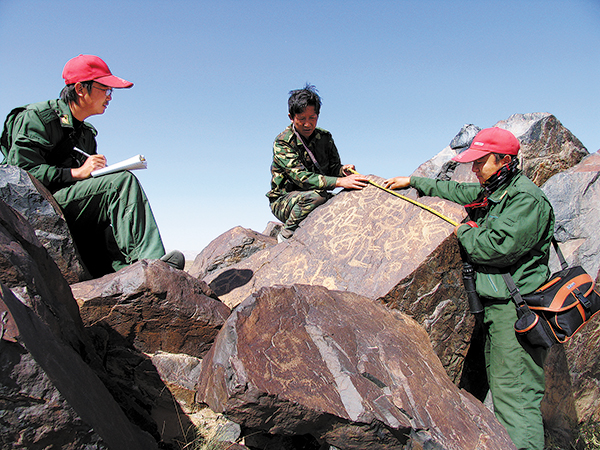

Fan Rongnan was astonished when he first stumbled upon rocks with paintings and carvings depicting nomadic life in the rugged and remote Mandela Mountains in the Inner Mongolia autonomous region in 1985. "It felt like entering a gallery in the wilderness. There are images of oxen, horses, goats, deer, snakes, eagles and turtles, stationary and moving, standing and lying," says the 60-year-old researcher of the Alshaa Right Banner Cultural Heritage Protection Center.
Fan didn't know exactly what he was looking at but did immediately realize they were treasures that could provide new clues to ancient mysteries.
According to researcher Ge Shanlin, these "living fossils of the origins of art" were produced from the Neolithic period to the 19th century, creating a record of the area's material and symbolic culture.
Over 7,000 ancient images cover rocks strewn across an 18-square-kilometer area. They continue to mystify scholars.
They vary in motif and include abstract symbols, human faces, animals, and scenes of hunting and herding.
Ge explains that Inner Mongolia's rock-art sites are the richest such troves near the country's northern border.
"Because the study of rock art was still nascent in China in the 1980s, it was not until 1987, when we sent the stones to Ge at the Inner Mongolia Institute of Cultural Relics and Archaeology, that we knew they were categorized as petroglyphs," Fan says.
He adds that these discoveries were followed by vandalism and theft.